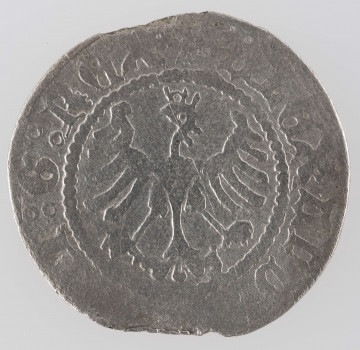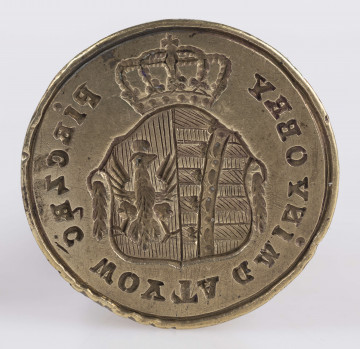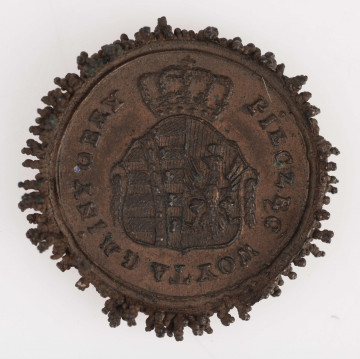
Alexander Jagiellon’s crown half-penny
1502 — 1506
National Museum in Lublin
Part of the collection: Money on Polish territory in the Middle Ages
Minting in Lithuania before Alexander Jagiellon did not have a long tradition. Although Lithuania gradually occupied larger and larger areas of the Ruthenian lands where coins had long been used, the dukes of Lithuania did not show much initiative in this respect. It was not until the 14th century that the first Lithuanian issues appeared, but they were of a local character. The beginning of the all-Lithuanian coinage can be traced back to the reign of Grand Duke Jogaila and the late 1480s. The rather primitive production technique, resulting in significant differences in weight and dimensions, makes it difficult to establish the denominations. These were, however, only fragmentary coins. It was not until Alexander Jagiellon, who became Grand Duke of Lithuania in 1492, that a coin of higher value was introduced – the Lithuanian half-penny. These coins were minted in Vilnius from the second half of the 1590s until Alexander's death in 1506, or even slightly longer. Significantly, the inscription on the rim MON' ALEXANDRI MAGNI DVC' LITVANIE (coin of Alexander the Great Prince of Lithuania) did not change when, after the death of Jan Olbracht, Alexander became the king of Poland in 1501. Although the monetary system of Poland and Lithuania was derived from the Prague penny standard, the half-penny (półgrosz’) minted by Alexander had a slightly higher silver content. As a result, their value was also higher than that of the Crown half-penny minted at the same time. As a result, for four Lithuanian halfpence one had to give five crown halfpence. Attempts were made to remedy this and in 1501, with the consent of the Polish and Lithuanian nobility, the minting rates of the Crown and Grand Duchy were equalised, but it was not put into effect.
Alexander's reign, initially as Grand Duke and later also as King, was a period of increasing reception of humanist influences. Interestingly, this phenomenon was also reflected on coins. One can clearly see the growth of revivalist elements in subsequent issues, and they were quite numerous and varied. Both the image of the eagle, and especially the typeface, gradually lost its Gothic character and became fully humanistic. The presented specimen belongs to the intermediate type, in which, apart from the predominant humanist influence, slowly disappearing gothic elements can be seen (for example, the gothic typeface of the letters M and N in the obverse inscription).
Leszek Poniewozik
Author / creator
Dimensions
cały obiekt:
Object type
numismatic
Technique
stamp minting
Material
silver
Creation time / dating
Creation / finding place
Owner
The National Museum in Lublin
Identification number
Location / status

1502 — 1506
National Museum in Lublin

1807-1815
National Museum in Lublin

1807-1815
National Museum in Lublin
DISCOVER this TOPIC
National Museum in Szczecin
DISCOVER this PATH
Educational path